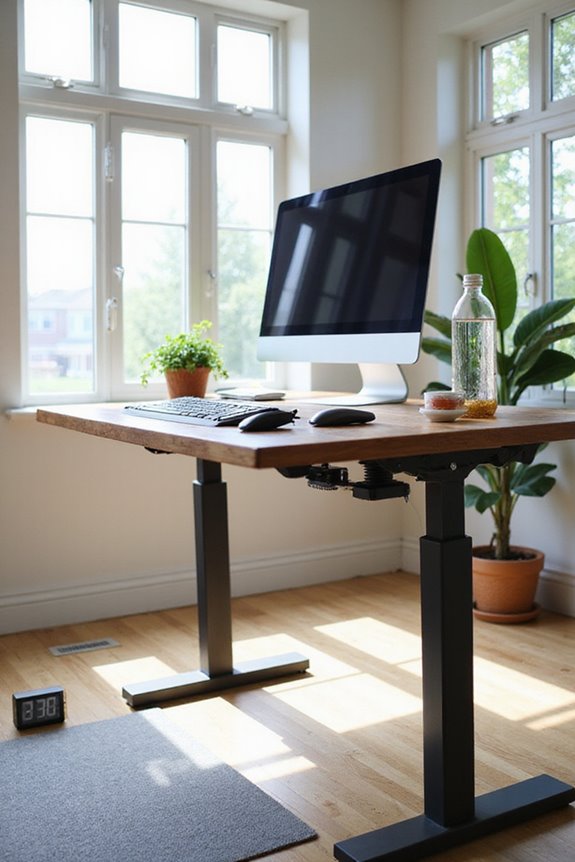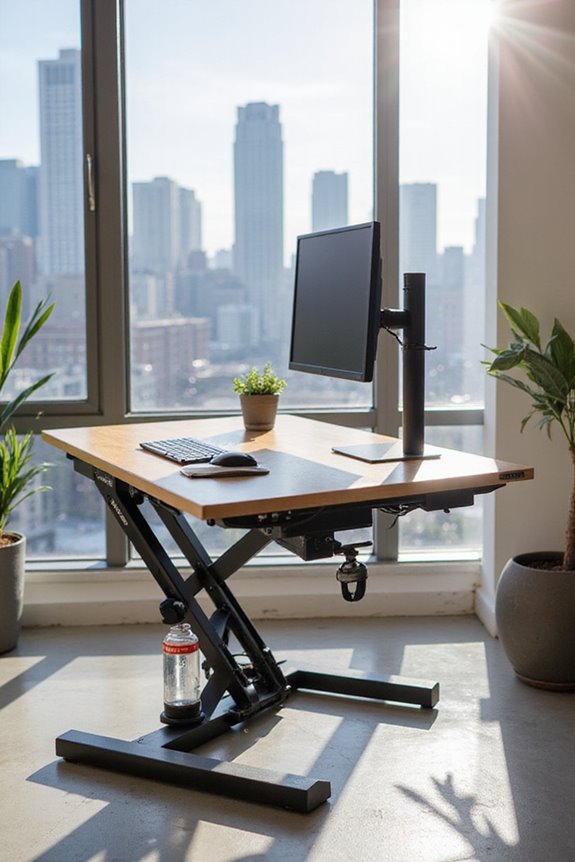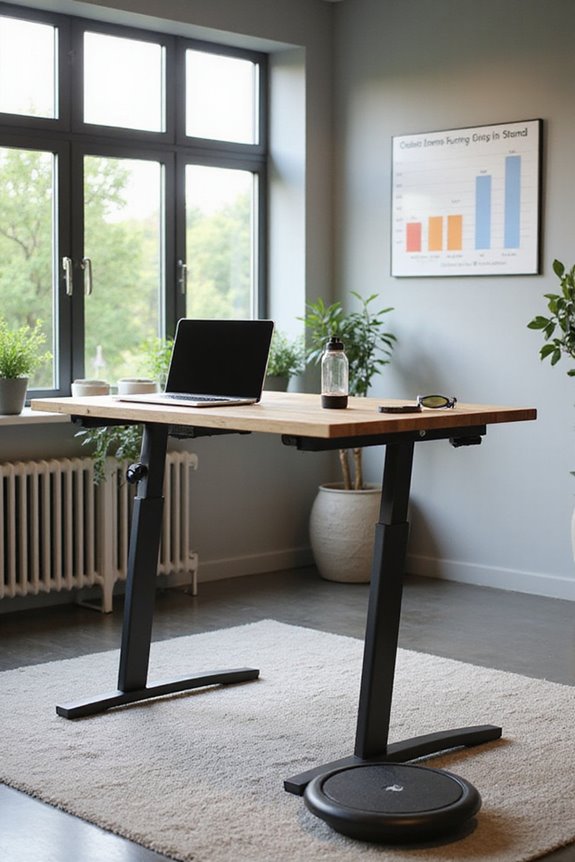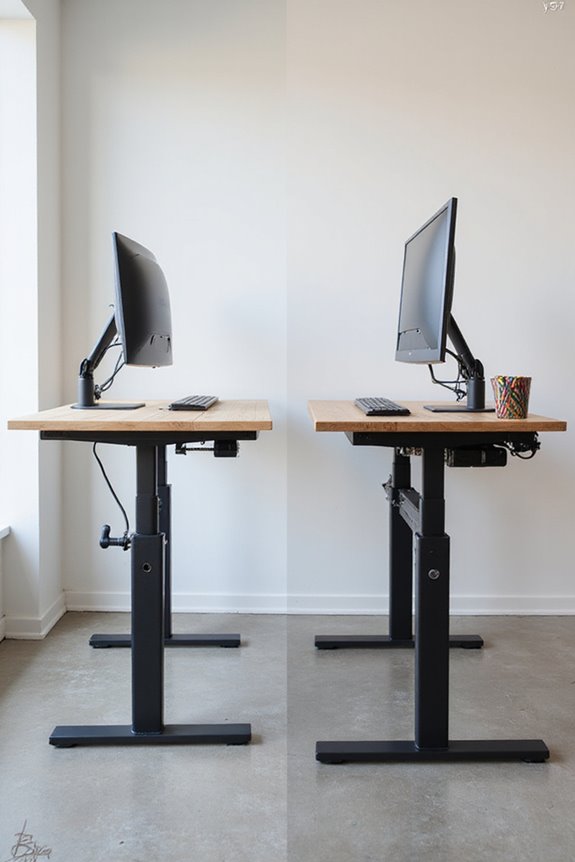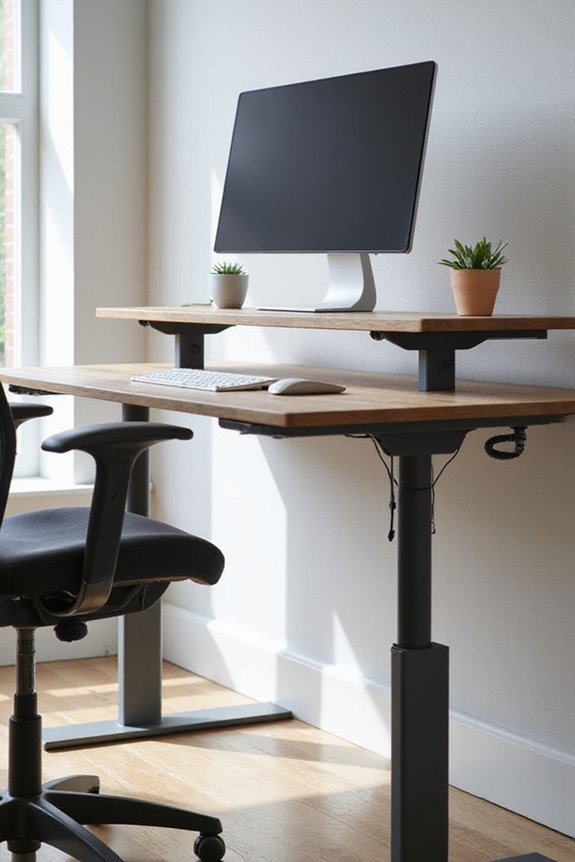When using a standing desk, I recommend aiming for about 2 to 4 hours of standing each workday. It’s best to start with 5 minutes of standing every 30 minutes and gradually increase based on what feels comfortable. Remember not to exceed 50% of your workday standing. Alternating between sitting and standing helps prevent fatigue. By adjusting to your personal needs and maintaining good posture, you can enhance both your comfort and productivity. You can discover more tips on optimizing your standing desk experience.
Key Takeaways
- Start with 5 minutes of standing every 30 minutes and gradually increase based on comfort.
- Aim for a daily standing duration of 2 to 4 hours.
- Total standing time should not exceed 50% of your workday.
- Use a structured approach, like a 1:1 ratio of standing to sitting time.
- Incorporate regular movement and breaks to avoid fatigue and discomfort.
Benefits of Using a Standing Desk
When considering the benefits of using a standing desk, it’s important to recognize how integrating this tool into your workspace can enhance both physical and mental well-being. Standing desks promote increased caloric expenditure, helping to burn over 170 extra calories in an afternoon. This slight boost can contribute to a healthier lifestyle, particularly for those concerned about obesity. Additionally, using a standing desk can considerably improve musculoskeletal comfort, reducing discomfort in the neck, shoulders, and lower back. By alternating between sitting and standing, I’ve noticed a reduction in fatigue and an overall enhancement in my mood and energy levels. This simple change not only supports better physical health but also fosters a more productive and engaging work environment. Moreover, the ergonomic solutions provided by adjustable height desks can significantly enhance user comfort during long hours of work.
Recommended Standing Duration
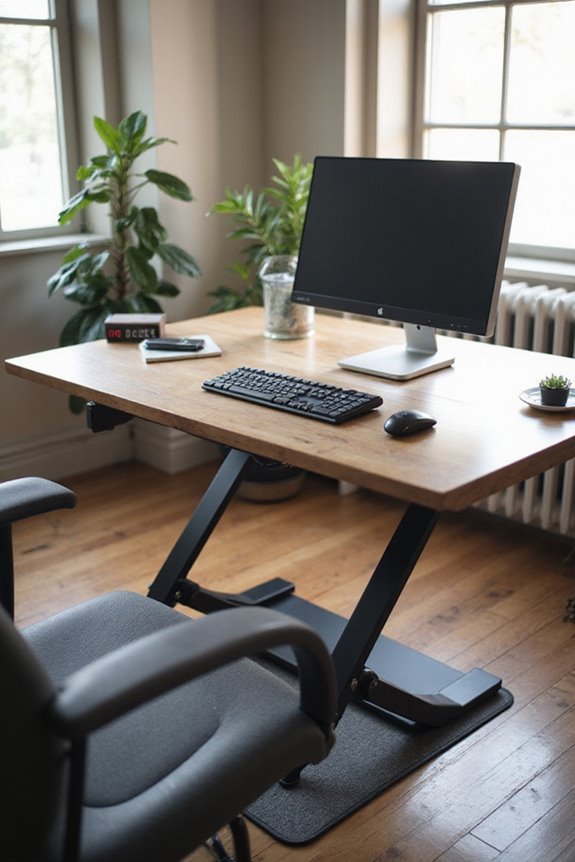
Finding the right balance for standing at a desk can greatly impact your comfort and productivity throughout the day. To start, I recommend standing for 5 minutes every 30 minutes. As you adjust, gradually increase your standing duration based on your comfort levels.
Aim for a daily standing target of 2 to 4 hours, ensuring that your total standing duration doesn’t exceed 50% of your workday. You can use different ratios, like a 1:1 ratio, standing for 30 minutes while sitting for 30 minutes. This structured approach helps achieve your daily goals while reducing health risks associated with prolonged sitting or standing. Monitoring how your body feels can guide you in finding the best balance for your needs. Additionally, investing in a high-quality anti-fatigue mat can significantly enhance your comfort while standing for extended periods.
Tips for Effective Posture
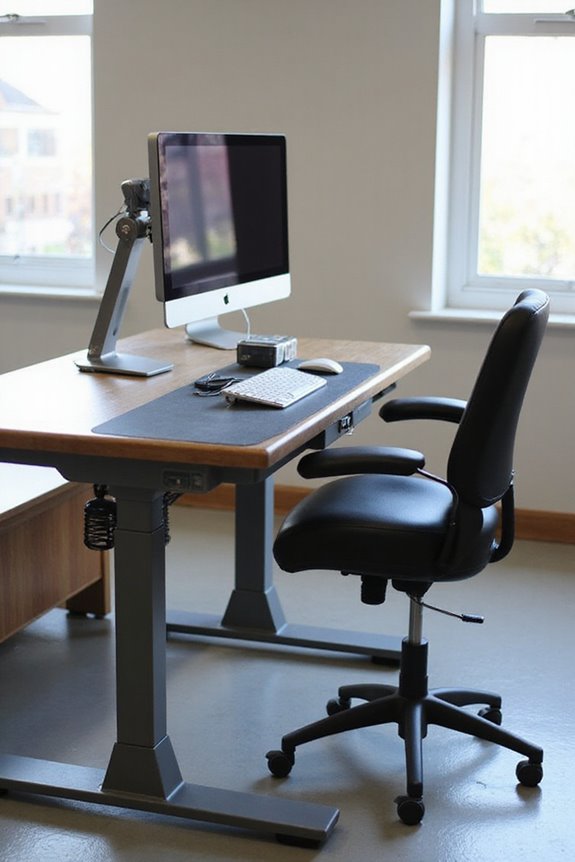
Achieving and maintaining proper posture at a standing desk is essential for both comfort and productivity. To guarantee good posture alignment, stand tall with your shoulders relaxed and spine in a natural position. Keep your feet hip-width apart, distributing weight evenly, and slightly bend your knees. Your neck should be neutral, with your head directly above your pelvis.
Adjust your desk height so your elbows rest at a 90-degree angle, and your wrists remain straight while typing. Utilizing ergonomic accessories, like wrist rests, can help maintain this wrist posture. Regularly check your posture throughout the day and consider adding a supportive stool or footrest for added comfort. These adjustments can greatly enhance your overall standing experience, as ergonomic footrests contribute to improved posture and reduced strain on your body.
Common Mistakes to Avoid

It’s essential to be aware of common mistakes that can undermine the benefits of using a standing desk. First, incorrect height adjustments can lead to discomfort; verify your desk aligns with your elbow height for ideal desk ergonomics. Second, monitor placement should be at eye level to prevent neck strain.
Another mistake is insufficient alternation between sitting and standing. Establish a consistent standing frequency to avoid fatigue. It’s also critical to engage your core and maintain a balanced stance; poor posture can lead to back pain. Finally, use anti-fatigue mats to enhance comfort while standing and avoid overextending your time in one position. By recognizing these common pitfalls, you can maximize your standing desk experience effectively. Additionally, incorporating adjustable lumbar support can provide necessary back support, enhancing overall comfort while standing.
Health Risks of Prolonged Standing
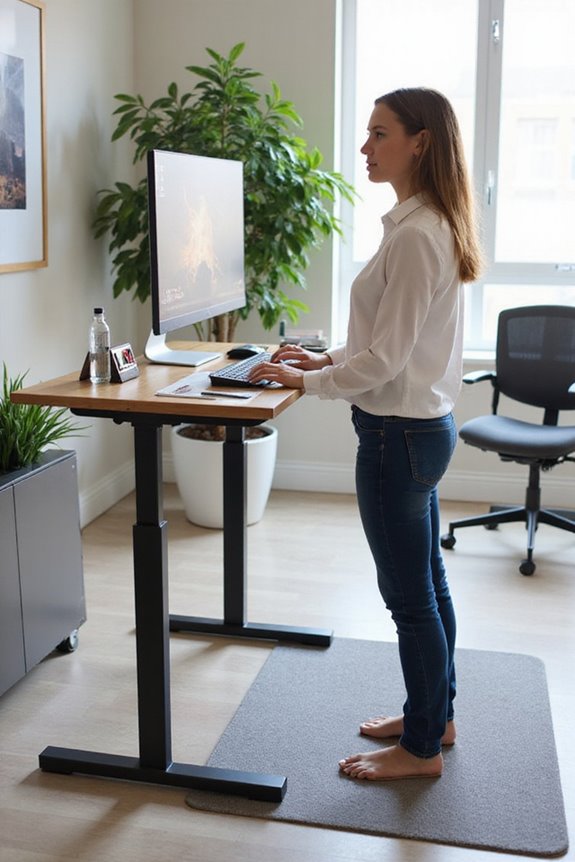
While standing desks can provide numerous benefits, it’s important to recognize the potential health risks associated with prolonged standing. One significant concern is standing fatigue, which can lead to discomfort in your legs, back, and joints over time. When I stand for extended periods, I often experience muscle aches and swelling, which can indicate that my body is under stress.
Additionally, prolonged standing may contribute to circulatory issues, such as blood pooling in the legs and increased pressure in the veins. This condition raises the risk of chronic venous disorders and even cardiovascular disease. To mitigate these risks, it’s vital to incorporate regular movement, take breaks, and consider using supportive footwear or floor mats to enhance comfort and support throughout the day.
Frequently Asked Questions
Can Standing Desks Improve Overall Workplace Morale?
I’ve noticed that using a standing desk boosts employee engagement and workplace satisfaction. It really enhances mood and mental health, making work feel more enjoyable and less stressful for everyone involved.
What Accessories Enhance the Standing Desk Experience?
To enhance my standing desk experience, I’ve found ergonomic mats and monitor risers invaluable. They keep me comfortable and help maintain good posture, making my work hours much more enjoyable and productive.
Are There Specific Exercises to Do While Standing?
Think of standing like a dance—balance exercises and stretching routines keep your body in sync. I often do leg raises and ankle rotations to stay energized and avoid stiffness while working at my standing desk.
How Does Standing Impact Creativity and Problem-Solving?
I’ve noticed standing really boosts my creativity. The benefits of being upright seem to spark new ideas and enhance problem-solving. It’s energizing, making brainstorming feel more dynamic and collaborative, which I truly appreciate.
Can Standing Desks Benefit Remote Workers Differently?
I’ve noticed a significant productivity boost while working remotely with my standing desk. It helps me stay focused, reduces fatigue, and allows me to customize my workspace, enhancing my overall work experience.

